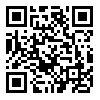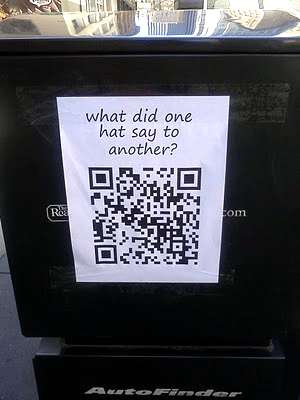| QR codes gaining acceptance |
| Written by Harry Fairhead |
| Sunday, 14 August 2011 |
|
14 million Americans scanned QR codes or barcodes using their mobile phones during June and QR codes are increasingly cropping up in the environment - why is such crude technology proving so popular? Back in April we speculated QR codes are dead? on the grounds that Google had discontinued QR codes on its Places business listing service. However recent evidence from Comscore suggests that it is too soon to dismiss the two-dimensional black and white Quick Response codes that provide links to information, and there are plenty of examples of their use in novel ways.
Comscore's study found that in June 2011, 14 million smartphone users in the U.S., representing 6.2 percent of the total mobile audience, scanned a QR or bar code on their mobile device. Code scanners tended to be young men with higher than average disposable income: 60.5 percent of code scanning audience were male; 53.4 percent were in the age range 18-34; and 36.1 percent had a household income of $100k or above. The study also reported that users are most likely to scan codes found in newspapers/magazines and on product packaging and do so while at home or in a store. That is they were responding to adverts, discount coupons or looking for information about products - all traditional uses for QR codes. However QR codes are beginning to crop up in more places. We've seen them on TV cooking programs as links to the recipes. One idea that might well be copied at social gatherings is this T-Shirt with contact details of the wearer - beats handing out business cards or scribbling on the back on an envelope.
You can find instructions for making your own on the Instructables site. Another idea from the same site is to use QR codes for the punchline to jokes. This seems to me to be a good way to popularize QR codes while at the same time recycling the old jokes you'd otherwise be embarrassed to use!
So why are QR codes so popular? What is it about this low density, low tech approach to storing data that makes it useful? Part of the answer is that it provides a simple and efficient way of connecting the real world with the virtual world. It makes a connection between a physical thing and some ephemeral, but usually much richer source, of data. You engrave a QR code on a product and it can immediately link the user with a web page that shows how to use it, how to buy extras and so on. And the rise of the QR code has been made possible by the rise of the smartphone. Almost anyone and everyone can scan a QR code using a phone and, more importantly see the web page or the data it contains in a single operation. In the future Google may well be correct and the high information densities provided by more sophisticated technologies like passive near field tags might well replace QR codes, but for the moment QR rules.
Further readingQR codes deliver the Flamenco experience Microsoft Tag and Barcoding in Color
If you would like to be informed about new articles on I Programmer you can either follow us on Twitter or Facebook or you can subscribe to our weekly newsletter.
|
| Last Updated ( Sunday, 14 August 2011 ) |



